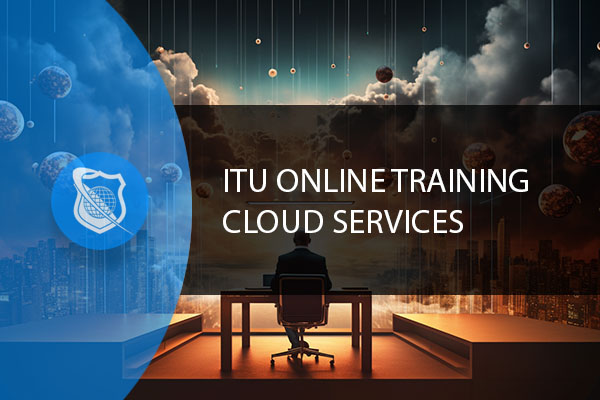Introduction:
In recent years, the technological landscape has undergone a significant transformation, leading to a crossroads between traditional and modern computing solutions. Central to this transformation is the concept of “On Premise Computing,” which has played a foundational role in how organizations manage and access their data. This article aims to delve into the intricacies of on-premise and cloud-based systems, shedding light on their differences, advantages, and suitable applications. As we navigate through this exploration, a notable mention is the evolution of SQL Server, a long-standing champion of on-premise data management, and how its functionalities have adapted to the burgeoning cloud computing era.
| Factors | On-Premise Computing | Cloud Computing |
|---|---|---|
| Initial Cost | High upfront costs for hardware, software, and infrastructure. | Lower upfront costs, pay-as-you-go model. |
| Ongoing Cost | Maintenance, upgrades, and energy costs can add up. | Predictable monthly or annual fees, potentially leading to cost savings over time. |
| Security | High level of control over security protocols. | Shared responsibility; robust security measures provided by reputable cloud service providers. |
| Compliance | Easier to comply with industry-specific regulations due to control over the environment. | Compliance may require extra diligence; dependent on service provider’s standards. |
| Performance | Customizable performance tuning. | Performance may vary based on provider and plan; generally high performance. |
| Scalability | Scaling up can be time-consuming and costly. | Easy and quick scalability as per demand. |
| Flexibility | Less flexible in adjusting to changing business needs. | High flexibility to adapt to changes. |
| Data Management | Direct control over data; suited for sensitive or critical data. | Range of data management tools; enhanced data accessibility and collaboration. |
| Data Accessibility | Data access may be limited to the onsite network. | Data can be accessed from anywhere, anytime. |
| Operational Agility | May lack operational agility due to hardware constraints. | Promotes operational agility through easy resource allocation and global accessibility. |
| In-house IT Expertise | Requires in-house IT expertise for maintenance and management. | Reduced need for in-house IT expertise; managed services available. |
| Infrastructure Management | Complete control over infrastructure management. | Infrastructure management handled by service provider to a large extent. |
Historical Background:
Evolution of On Premise Computing and SQL Server
The concept of on-premise computing has its roots firmly planted in the early days of organizational IT infrastructure. In an on-premise setup, all hardware and software resources are housed within the premises of the organization. This setup provided a sense of control and security over data, which was paramount in a time when digital resources were scarce and internet connectivity was not as robust as today. With the advent of SQL Server, managing vast amounts of data on-prem became more streamlined. SQL Server brought a level of manageability and accessibility to data that was hitherto unseen, making on-premise computing a standard practice among many organizations.
As time progressed, the winds of change brought with them a new paradigm in the form of cloud computing. This shift marked a significant departure from traditional on-premise setups. Unlike on-premise computing, cloud computing leverages remote servers hosted on the internet to manage, process, and store data. The transition towards cloud computing beckoned a new era of flexibility, scalability, and cost-efficiency, challenging the once unchallenged domain of on-premise computing. The juxtaposition of on-premise and cloud computing presents a captivating exploration of the old versus the new, each with its unique set of benefits and challenges.
In the midst of this transition, SQL Server too evolved, extending its functionalities to embrace cloud-based systems. The adaptability of SQL Server showcases a harmonious blend of the tried-and-tested with the new, allowing organizations to choose or transition between on-premise and cloud-based systems based on their operational needs and strategic goals. As we delve deeper into the comparative analysis of on-premise and cloud-based systems, the role of SQL Server as a bridge between these two worlds becomes increasingly apparent, making this exploration both timely and relevant in today’s fast-evolving technological landscape.
Understanding On-Premise Computing:

Get Ahead In Cloud Computing
At ITU, we offer an exclusive Cloud Computing training series designed to prepare you for certification and/or to help you gain knowlege of all Cloud based platforms including AWS, Azure and Gooogle Cloud.
Get access to this exclusive Cloud Computing Training today.
Core Components and Functionalities of On Premise Computing
On-premise computing refers to the traditional method of setting up and managing an organization’s IT infrastructure onsite. Under this model, all the necessary hardware such as servers, storage systems, and networking equipment, along with software applications, are housed within the premises of the organization. This setup grants businesses complete control over their IT environment, enabling them to adhere to specific security, compliance, and operational standards.
A cornerstone of on-premise computing is the utilization of robust data management systems, among which SQL Server stands prominent. SQL Server in an on-premise setup serves as the backbone for storing, retrieving, and managing data efficiently. It provides a secure and reliable environment for handling a vast amount of data, making it a preferred choice for organizations with stringent data security and privacy requirements. Additionally, SQL Server offers a suite of advanced tools for data analysis, business intelligence, and machine learning, facilitating data-driven decision-making within the organization [1].
The benefits of on-premise computing are numerous. It provides a high level of control over data, enhanced security, and the ability to customize the IT environment to meet unique business needs. However, it also comes with its set of challenges. High upfront costs, the need for in-house IT expertise, and the responsibility for ongoing maintenance and management are among the hurdles that organizations might face. Moreover, scaling up the IT infrastructure in response to growing business demands can be a resource-intensive endeavor in an on-premise setup.
Understanding Cloud Computing:
Navigating the Cloud: A Modern-day Computing Solution
Cloud computing, on the other hand, represents a shift from traditional onsite IT management to utilizing remote servers hosted on the internet for managing, processing, and storing data. This modern-day computing solution provides a flexible and scalable environment that can be accessed from anywhere, anytime, thus promoting operational agility and cost-efficiency.
Cloud computing can be segmented into three primary models based on service delivery: Infrastructure as a Service (IaaS), Platform as a Service (PaaS), and Software as a Service (SaaS). IaaS provides virtualized computing resources over the internet, PaaS offers a platform allowing developers to build, deploy, and manage applications, while SaaS delivers software applications via the internet on a subscription basis. Each of these models caters to different business needs and operational requirements, providing a spectrum of options for organizations looking to leverage cloud-based solutions.
The allure of cloud computing lies in its numerous benefits. It lowers the barrier to entry by reducing upfront capital expenditure, offers seamless scalability to accommodate growth, and provides a collaborative environment that fosters innovation. Yet, it’s not without its challenges. Concerns regarding data security, compliance with regional and industry-specific regulations, and potential data latency are some of the considerations that may require attention. The decision between on-premise and cloud-based systems often hinges on an organization’s individual circumstances, including its operational needs, budgetary considerations, and long-term strategic goals.

Get Ahead In Cloud Computing
At ITU, we offer an exclusive Cloud Computing training series designed to prepare you for certification and/or to help you gain knowlege of all Cloud based platforms including AWS, Azure and Gooogle Cloud.
Get access to this exclusive Cloud Computing Training today.
On Premise Computing vs Cloud: A Comparative Analysis:
Weighing the Pros and Cons: On Premise Computing vs Cloud
The decision between on-premise and cloud computing is often contingent on a variety of factors. Here, we’ll dissect some of the primary considerations that organizations must weigh when choosing between these two infrastructural models.
Cost Considerations:
The financial implications of the choice between on-premise and cloud computing are significant. On-premise setups entail high upfront costs for hardware, software, and infrastructure. Additionally, there are ongoing costs for maintenance, upgrades, and energy consumption. Cloud computing, conversely, operates on a pay-as-you-go model with recurring monthly or annual fees, significantly lowering the upfront capital expenditure.
Security and Compliance Considerations:
Security remains a paramount concern, especially for organizations in heavily regulated industries. On-premise computing provides a controlled environment where companies can enforce stringent security protocols and comply with industry-specific regulations. In cloud setups, while reputable providers offer robust security measures, the responsibility becomes shared, and compliance may require extra diligence.
Performance, Scalability, and Flexibility Comparisons:
Cloud computing shines in its scalability and flexibility, allowing organizations to quickly adjust resources to meet changing demands. On-premise setups might lack this agility, often requiring substantial time and investment to scale. Performance can be optimized in both setups, but the on-premise environment allows for more customized performance tuning.
Data Management:
Data management practices vary between on-premise and cloud setups. On-premise computing offers direct control over data, catering to organizations with sensitive or critical data. Cloud computing provides a broader range of data management tools and analytics capabilities, often enhancing data accessibility and collaboration.
Transitioning from On-Premise to Cloud:
Bridging the Technological Gap: Transitioning to Cloud
Factors to Consider:
Transitioning to the cloud requires a thorough assessment of existing infrastructure, data migration needs, security, and compliance requirements. It’s a multifaceted process that necessitates a well-thought-out strategy.
Tools and Strategies:
Various tools and strategies can aid in a smooth transition. These include cloud migration platforms, professional services, and a phased approach to migration to mitigate risks and ensure operational continuity.
Case Studies:
Numerous organizations have successfully transitioned from on-premise to cloud, reaping benefits like reduced operational costs, enhanced agility, and improved collaboration. Case studies provide valuable insights into the strategies employed and the challenges overcome during such transitions.
Conclusion:
This article offers a panoramic view of on-premise and cloud computing, shedding light on their respective merits and challenges. As we transition into an era where flexibility, scalability, and data accessibility are paramount, the discourse between on-premise and cloud computing becomes increasingly relevant. We encourage readers to evaluate their unique operational needs, financial capabilities, and long-term strategic objectives when considering the transition between these two predominant IT infrastructural models. By doing so, organizations can make informed decisions that align with their goals, ensuring a robust and future-proof IT infrastructure.
Unveiling the Mysteries: On Premise Computing FAQ
What is On Premise Computing and how does it differ from cloud computing?
On Premise Computing refers to the traditional model where an organization’s IT infrastructure is housed on-site, within the organization’s premises. This includes all the servers, storage, and networking equipment. In contrast, cloud computing involves using remote servers hosted on the internet to manage, store, and process data.
What are the key advantages of On Premise Computing?
The key advantages of On Premise Computing include a higher level of control over the IT environment, enhanced security, and the ability to meet specific compliance standards. Additionally, it provides a predictable, one-time cost for many of its components, as opposed to the recurring costs associated with cloud computing.
Are there any industries or sectors that particularly benefit from On Premise Computing?
Industries with strict data security and compliance requirements, such as healthcare, finance, and government sectors, may find On Premise Computing to be more suitable. The control and security over data offered by on-premise solutions can be crucial for these sectors.
How does the cost of On Premise Computing compare to cloud computing over the long term?
The cost comparison between On Premise Computing and cloud computing can vary based on the specific needs and scale of an organization. On-premise solutions require a significant upfront investment but may have lower ongoing costs. Cloud computing, on the other hand, has lower upfront costs but ongoing subscription fees which can accumulate over time.
Can an organization transition from On Premise Computing to cloud computing, and what are the considerations in doing so?
Yes, transitioning from On Premise Computing to cloud computing is possible and is often referred to as a cloud migration. Important considerations include evaluating the existing infrastructure, understanding the cost implications, ensuring data security and compliance, and possibly employing a phased migration approach to mitigate risks and ensure a smooth transition.
You may also like:
IaaS Products : Why They Are Essential for Modern Businesses
What is the Cloud and How Does It Work : Understanding Where Your Files Go
Main Cloud Providers : The Top 10 Companies Dominating Cloud Computing
Cloud Plus Certification : Bridging the Gap in Your IT Career
























